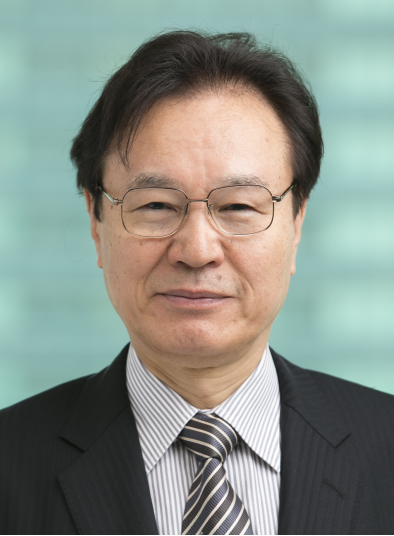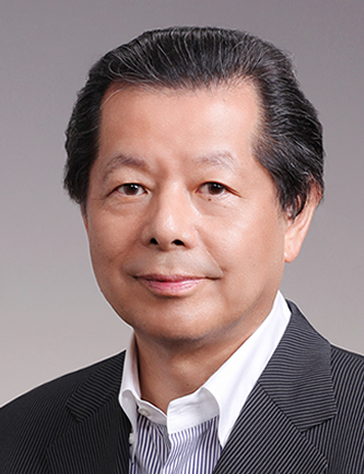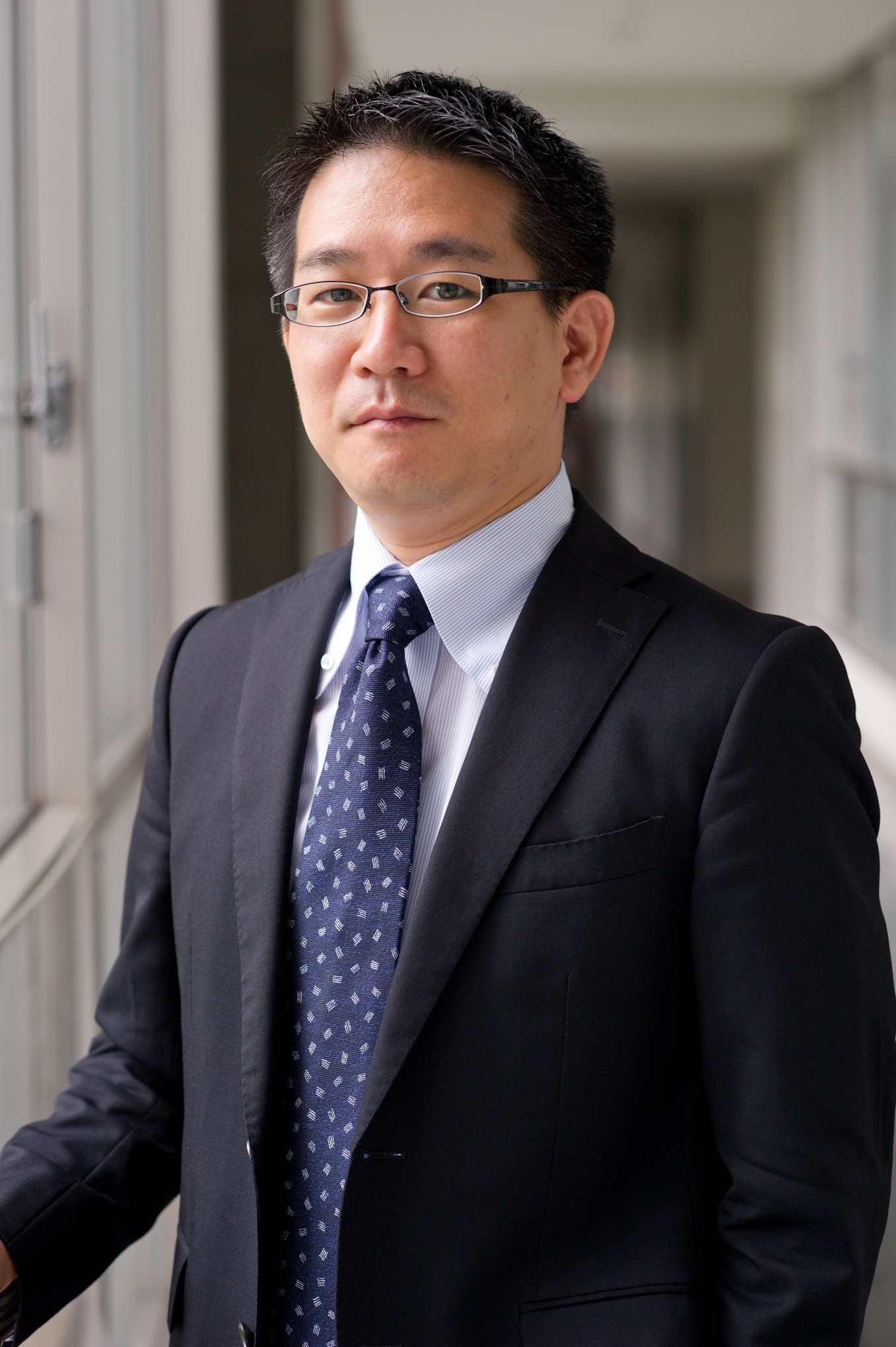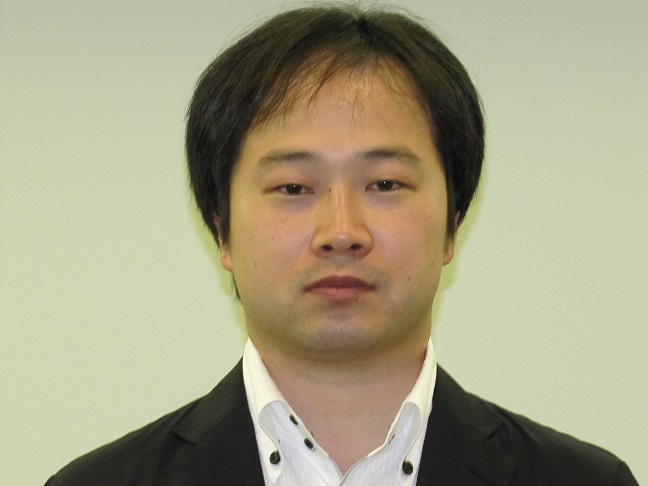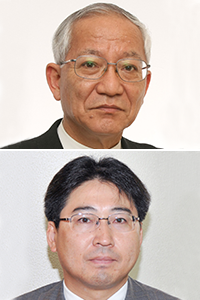How will OSA change security cooperation?
Japan’s security cooperation “for the benefit of the armed forces and related organizations (of the countries),” which could not be achieved through ODA, has begun. Provision of equipment and supplies, such as patrol boats and radar systems, is being made, and as a “next step,” attention is being given to military infrastructure assistance. This article explores the significance and challenges of the new tool for security cooperation that Japan has acquired.
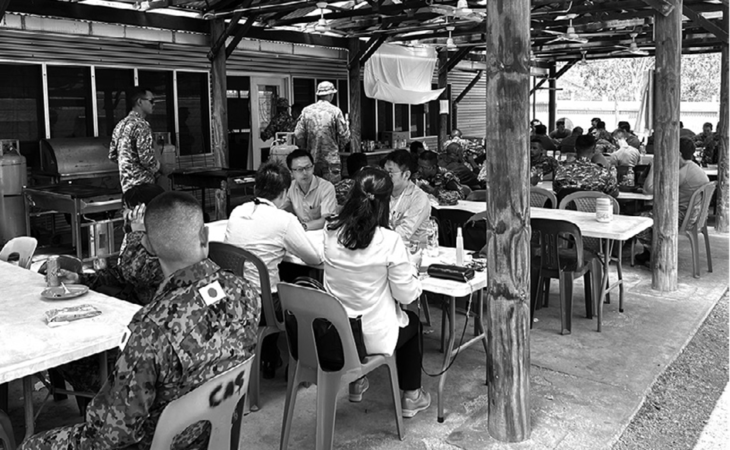
A facility in part of the Australian military quarters in Timor-Leste, used by military personnel for meals and meetings. OSA could be used to develop such a facility that could be used during visits by the Self-Defense Forces. Photo: courtesy of the author
Nishida Ippeita, Senior Fellow, Sasakawa Peace Foundation
With the establishment of Official Security Assistance (OSA), Japan’s foreign aid is entering a new phase. In 2012, Japan introduced Capacity Building Assistance (CBA) to train military personnel of other countries, but CBA is not accompanied by a policy scheme to provide material support to defense authorities of the recipient states. This has been problematic. Official Development Assistance (ODA) cannot be used to address security objectives, and such incapability had limited the effectiveness of Japan’s CBA and its appeal to partner countries. In short, CBA could not fully achieve the policy objective of creating the “desirable security environment” that Japan wants to foster. To address this problem, National Security Strategy of Japan 2022 proposed the establishment of a new cooperation framework aimed at enhancing the defense and deterrence capabilities of like-minded countries. And the following year, in April 2023, the National Security Council adopted the Implementation Guidelines for Japan’s OSA.
Initial launch: Four countries to promote maritime safety
The OSA is a grant assistance program to like-minded countries to “provide equipment and supplies as well as assistance for the development of infrastructure for the benefit of the armed forces and related organizations of the countries.” In principle, it is aimed at developing countries, but unlike ODA, which is development aid, it is a framework that falls under military aid. OSA has three domains of cooperation: “activities for ensuring peace, stability and security based on the rule of law (e.g. monitoring and surveillance in territorial waters and airspace, counter-terrorism, counter-piracy),” “Humanitarian activities (e.g. disaster response, search and rescue operations, lifesaving, medical care, capacity enhancement for the transportation of humanitarian relief goods),” and “International peace cooperation activities (e.g. assistance for the enhancement of capabilities to take part in UN Peacekeeping operations)” where these are not directly related to international disputes. To be implemented, OSA needs to abide by the framework of the Three Principles on Transfer of Defense Equipment and Technology and the Implementation Guidelines for the Three Principles on Transfer of Defense Equipment and Technology. For the time being, the use will be limited to five types of activities: rescue, transportation, warning, surveillance, and minesweeping. Economic and social conditions, including the status of democracy in recipient countries, should be considered when selecting target countries, and the project’s appropriateness and transparency should be ensured.
Within the Ministry of Foreign Affairs (MOFA), the “Security Cooperation Division (Office)” at the Foreign Policy Bureau takes the lead in formulating projects in cooperation with the National Security Secretariat (NSS) and the Ministry of Defense. There is no implementing agency such as the Japan International Cooperation Agency (JICA) for ODA, and private companies are selected through public bidding to carry out procurement on behalf of recipient countries. From the perspective of maintaining the domestic defense industry, Japanese companies are assumed to be the suppliers of goods and services. An Exchange of Notes (E/N) will be made with the partner country for each project, and information will be disclosed to ensure proper management to prevent use for other than the intended purpose.
In its first year, FY2023, OSA received a budget of 2 billion yen (roughly 12.4 million USD) and implemented projects in four countries. These were the Philippines (provision of coastal radar systems, 600 million yen), Bangladesh (provision of patrol boats, 575 million yen), Malaysia (provision of monitoring and surveillance equipment, 400 million yen), and Fiji (provision of patrol boats and other related equipment, 400 million yen). All of these projects involve the provision of equipment to promote maritime security, a key pillar of the Free and Open Indo-Pacific (FOIP) initiative, and are designed not just to enhance the capabilities of the partner country’s military, but also to secure Japan’s regional access and strengthen security cooperation with Japan.
The projects in the Philippines and Malaysia aim to improve the coastal surveillance and maritime domain awareness (MDA) capabilities of both countries, with an eye on China as it continues to develop its military bases in the South China Sea. Expectations are that they will build momentum in the bilateral relationships that will lead to future defense equipment transfers. With India, Japan is the main provider of funds to develop a new economic corridor in South Asia that will connect northeastern India to the Matabari deep-sea port (also under construction) in Bangladesh that will serve as an international logistics hub. In the future, it is hoped to build an enhanced military relationship to support the maintenance of stability in the Bay of Bengal, a strategic point on the maritime route. The patrol boats that Japan will provide to Fiji will be used for operational training by Australia, which is intended to serve as a check on China’s military expansion in the Pacific Islands region through Japan-Australia cooperation.
Next: Eyeing Vietnam and Djibouti
As explained, each OSA project is implemented with multiple objectives, such as enhancing bilateral relationships, securing Japan’s access and presence in the region, and building local capacity to maintain stability. With respect to defense equipment transfers, it is expected to play a role in laying the groundwork, taking into account the strong demand in emerging economies. In addition, through a combination with CBA, reciprocal visits, and short-term training in Japan, it is hoped that the program will promote mutual understanding at all levels, expand human networks, enhance operational and response capabilities, facilitate understanding of international law, and strengthen the normative awareness of soldiers, thereby contributing to the professionalism of the partner country’s military forces. Through these efforts, the goal is to cultivate regional strength capable of resisting unilateral changes to the status quo through force or coercion and attempts to do so, and to steadily build a deterrent force that prevents situations that could trigger conflict.
Observers are curious to know how OSA will develop in the future. MOFA is planning to expand the target countries to Vietnam and Djibouti in 2024, and these may provide some clue.
Vietnam is one of Japan’s most important countries in Southeast Asia and a like-minded country that shares the same goal of peace and stability in the South China Sea. Despite differences in ideology and political system, Japan-Vietnam relations have made great progress in all areas, including the military, over the past decade. In 2024, Japan plans to increase the number of defense attachés stationed in Vietnam from the current two, making it the first in Southeast Asia to have a three-services representation. To further strengthen defense cooperation, Japan plans to create a new defense attaché post to Cambodia by ending the current concurrent jurisdiction with Vietnam. Japan already provides extensive CBA projects to Vietnam, and OSA is expected to respond to a wide range of requests, from improving MDA in the South China Sea to providing equipment for peacekeeping operations.
Since 2009, Djibouti has been home to the aerial surveillance and intelligence gathering base for anti-piracy operations conducted by Japan’s Self-Defense Forces (SDFs) in the Gulf of Aden. National Security Strategy 2022 demands the Djibouti base be used for rescue of Japanese nationals living overseas, and in December 2023, a Cabinet decision was made to do so in the event of unrest in the Middle East and Africa. In line with this, the SDF facility in Djibouti is expected to be upgraded to become an operational infrastructure with pre-positioned supplies and equipment, to be further utilized to strengthen defense cooperation and exchanges, and to improve intelligence capabilities. To do this, it is necessary for Japan to ensure the “long-term and stable use of the SDF operational facility” (National Defense Strategy 2022) and thus to maintain and strengthen relations with the Djibouti government. In regard to OSA, in addition to providing equipment and supplies to the Djiboutian military, there might also be a need to support military infrastructure development, such as the construction of barracks within the garrison.
The application of OSA to these countries is in different contexts. With Vietnam, the goal is to strengthen the country’s capability to deter China, while assistance to Djibouti is provided to safeguard the operation base. Naturally, the content and scope of the assistance required should differ. Therefore, within MOFA, the Security Cooperation Division will be upgraded by the end of fiscal 2024, and the number of personnel, including those seconded from the Ministry of Defense and the SDF, will be expanded from the current level of around 10 (together with concurrent posts). The OSA budget is to become 5 billion yen, 2.5 times the amount for the first year. Besides Vietnam and Djibouti, such names as the Philippines and Mongolia appear in the tender announcements of preliminary survey work for 2024. At present, it is unclear how far the target countries will expand in the future, including Indonesia, Cambodia, Sri Lanka, and island countries in the Indian and Pacific Oceans. However, it is expected to become a strategic tool with a budget of tens of billions of yen in a few years.
Strengthen collaboration between units through infrastructure development
Interest in OSA tends to focus on the provision of equipment and supplies, but infrastructure development can also play an important role. This is because Japan’s ODA cannot support financing enhancement or rehabilitation of dual-use facilities. Thus, in the case of an airport, a combination of ODA for the development of civilian terminals and OSA for military-civilian facilities could also be envisaged. For the littoral and island states as well as earthquake-prone countries where the risk of large-scale natural disasters is high, OSA could also be used to construct storage facilities for pre-positioning relief equipment and supplies so as to serve as a platform for overseas assistance. This could be combined with the provision of CBA as well as joint exercises, assuming that Japan were to partake in disaster relief operations.
The other is development of the physical infrastructure for Japan to work with the partner country. For example, for countries like the Philippines, where there is a growing need for reciprocal visits by the SDF, it is possible to improve port facilities, repair unit buildings, and construct military barracks, and allow the SDF to use these facilities when it visits. Stockpiling some equipment locally would also help improve the SDF’s ability to deploy overseas.
For example, Australia is using its Defence Cooperation Program (DCP) budget to provide accommodation for capacity-building assistance personnel at a base on the outskirts of the capital in Timor-Leste. The UK’s British Peace Support Team (BPST), which provides capacity-building assistance throughout Africa, is physically located at the Kenyan Army’s International Peace Support Training Center. It is not necessary for the SDF to establish such bases on its own, but contributing to the development of these facilities through the OSA and collaborating with them on the ground is an idea worth considering. By regularly dispatching CBA and liaison officers for short- or long-term assignments, in a mutually complementary manner, the SDF can envision contributing to multiple objectives, including securing a presence in the region, improving relations with host countries, strengthening cooperation with close like-minded countries such as the UK and Australia, and contributing to stability of the region.
OSA requires a cross-ministerial coordination system and operational flexibility
OSA also has its challenges. There is no system to transfer Japan’s costly defense equipment through loans or an export subsidy scheme. Given the limited budget for OSA itself, grant provision of large equipment is not imaginable. There is no implementing agency like JICA, which may hamper implementation of infrastructure support projects that require specialized knowledge. Upgrading the Security Cooperation Division at MOFA to a full-division unit is a step forward. However, there is no cross-cutting system to coordinate with related instruments such as the strategic use of ODA, CBA, and the transfer and lease of pre-owned equipment. In fact, the departments responsible for Japan’s security cooperation, such as the Ministry of Foreign Affairs (OSA), the Ministry of Defense (bilateral CBA), the Joint Staff Office (anti-piracy operations and CBA for UN’s Trilateral Partnership Programme), and the Cabinet Office (peacekeeping), are divided. Ad-hoc coordination exists between the offices, but there is no comprehensive mechanism that can make the most out of the tools.
Some of the wording in OSA’s implementation guidelines allows for flexible interpretation, leaving room for more creative and strategic use of OSA. Recipient countries are “in principle” developing countries. This would allow provision of OSA to countries that are graduating from developing country status and countries where special measures are applied. Also, consideration of the economic and social conditions of the recipient country is only part of the selection requirements. Many developing countries have complex domestic political circumstances, and the reality is that many countries have less than good records in terms of democracy and human rights. The guidelines also state that recipients are the armed forces and “related organizations.” This comes from the fact that only three recipients from among the Pacific Island states—Papua New Guinea, Fiji and Tonga—have a military force. Already, the Japan Maritime Self-Defense Force’s Ship Rider Cooperation Program (a region-wide CBA) includes the participation of coast guards from Pacific Island countries that do not have military forces. OSA could also help strengthen ties with these small island states, including those that recognize Taiwan.
Policies useful for implementing FOIP
What kind of relationship does Japan seek to establish with recipient countries through OSA? The diplomatic significance of security cooperation lies in the ability to exert influence on the partner country as well as other relevant stakeholder countries. Just as Japan relies on US-made military equipment, provision of military equipment that has unique and superior capabilities can create asymmetric relations with other countries. However, in the case of OSA, this relationship does not hold because of the scale of projects handled by OSA, and the equipment and materials provided are likely to be available in other countries or on the international market. It is also difficult to imagine that individual cases will dramatically improve the deterrent power of the other country.
The basic stance of Japan’s security cooperation is to respect the sovereignty and autonomy of other countries and to promote dialogue and cooperation based on mutually beneficial relations with all countries from an equal perspective, based on the trust that Japan has established with each country as a peace-loving nation. As mentioned above, each project has its own objectives, but it is not wise to push them to the forefront. Rather, it would be appropriate to position OSA and CBA as a means to deepen understanding of Japan’s FOIP philosophy, which does not tolerate unilateral changes to the status quo through force or coercion, and to encourage Japan to play a role in this effort. This is the projection of soft power through the military, a nudging approach that subtly encourages others to make decisions and actions accordingly, while staying close to them.
With Southeast Asia, to which Japan attaches particular importance, Prime Minister Kishida Fumio has proposed the establishment of a “Free and Open International Order” (FOIO) based on the rule of law in Southeast Asia. In addition to trust and co-creation, Kishida says, FOIO should pave the way as a concrete action for the next half century. While FOIP evokes the geographical space of the Indo-Pacific and strategic engagement in it, FOIO is attracting attention as a new concept that evokes the importance of the rule of law and inclusiveness as universal values of the international community. Then perhaps, besides supporting traditional security agenda, it is equally important for Japan to contribute to the upholding of “ASEAN centrality” by providing multifaceted support to improve the region’s capacity to deal with climate change, transnational crimes and peacekeeping needs that contribute to the enhancement of ASEAN’s status in the international community.
Translated from “OSA de Anzen-hosho wa dokawaruka (How will OSA change security cooperation?),” Gaiko (Diplomacy), Vol. 84 Mar./Apr. 2024, pp. 44-49. (Courtesy of Toshi Shuppan) [June 2024]
Keywords
- Nishida Ippeita
- Sasakawa Peace Foundation
- Official Security Assistance (OSA)
- foreign aid
- military aid
- security cooperation
- peace cooperation
- Capacity Building Assistance (CBA)
- National Security Strategy
- National Security Council
- maritime safety
- defense equipment
- infrastructure development
- Self-Defense Forces
- Free and Open Indo-Pacific (FOIP)
- Free and Open International Order (FOIO)
- Japan
- Vietnam
- Djibouti
- Gulf of Aden

